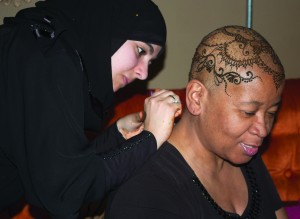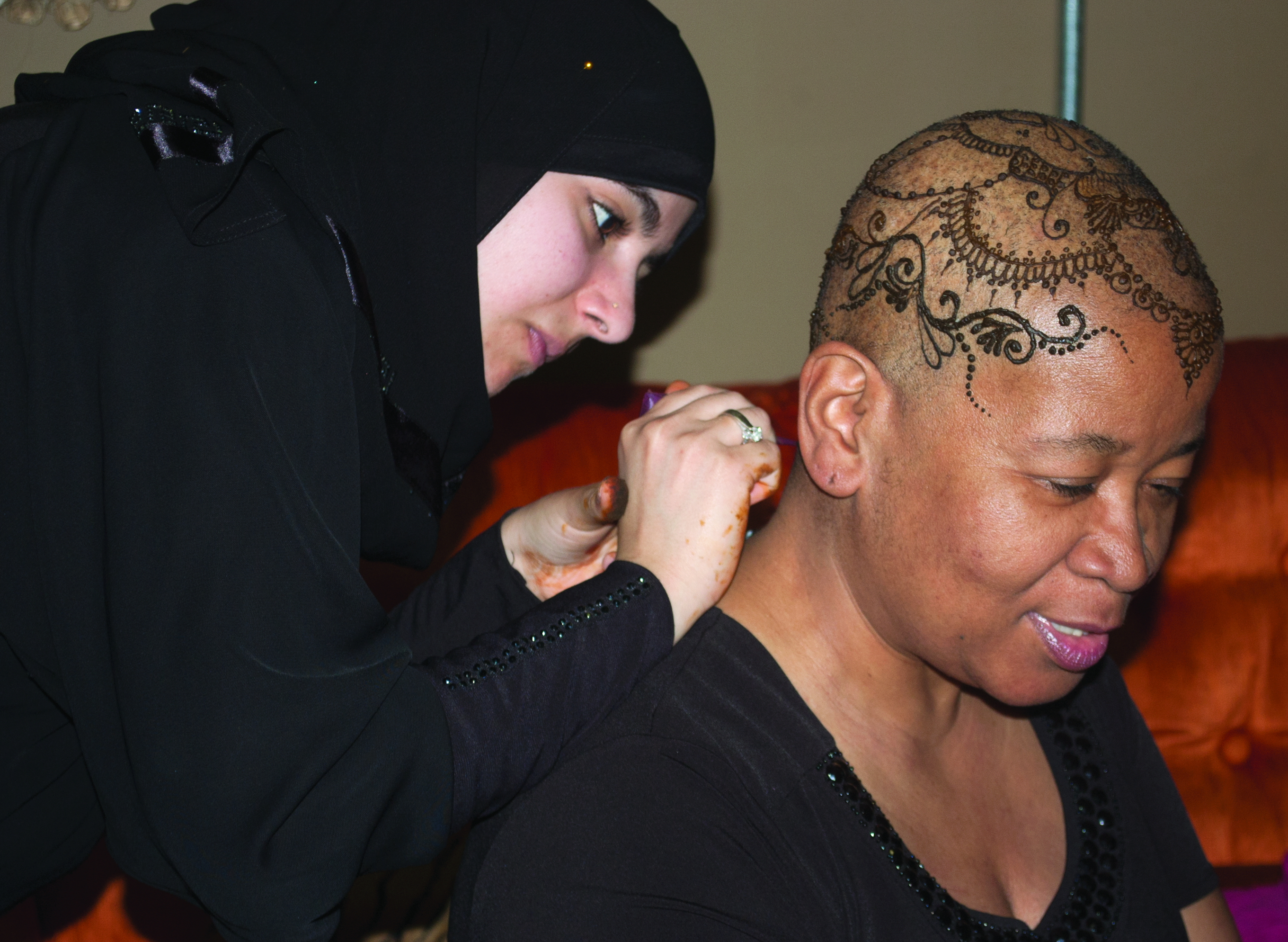
Youngstown State University alumna and henna artist, Lamia Alfares gave an object lesson of her artistic skill.
At the Calvin Center for the Arts on Mahoning Avenue, Alfares etched a henna crown on Monica Beasley-Martin, a valley author with alopecia — a medical condition that causes hair loss.
Alfares, who graduated from YSU with a pre-medical degree in December 2012, said she has always practiced art, but after an ongoing interest in henna for most of her life, she took up the trade in earnest two years ago.
“When I went to a wedding overseas, I had it done, so I brought a couple [henna] combs back and started from there two years ago. It took a lot of patience,” Alfares said. “When I first started, they were awful. I couldn’t even make a heart or a smiley face. No matter how good you are at drawing — which I was pretty decent at — doing this requires a lot of concentration, a lot of focus.”
Henna artists use a special dye from the henna plant, which Alfares grows herself, to create temporary tattoos. Henna has been used since antiquity, from the Mediterranean to India, to adorn women, and even men, with ritualistic or celebratory tattoos during holidays, marriages and religious events.
Alfares said her interest stemmed partly from the importance of henna in her religion of Islam.
“It has a lot of uses asides from body adornment, and it is very important for me, especially because it has a huge religious meaning. It is really advised in our religion, especially for women to wear henna on their hands and for men to only dye their beard and their hair,” Alfares said.
After gaining some experience with the art, Alfares began using her Facebook and Instagram to get in touch with clients. She said she typically would have 10 to 15 clients per month, with an increase during the summer months when weddings and events are more frequent.
Beasley-Martin was brought in contact with Alfares through her Facebook page “Henna by Lamia”. Beasley-Martin said an anonymous individual even offered to pay for the tattoo because of her involvement in the community.
“You have to be comfortable with whoever you are at that point in time in your life, and so this is who I am right now,” Beasley-Martin said. “I think it is awesome how we were put together because, with her being Muslim and me being Christian, I see this as seriously being a God thing, too.”
For around 45 minutes on Friday, Beasley-Martin stayed still while Alfares drew an intricate tattoo rife with intersecting patterns commonly seen in the art form. Typical to henna, the tattoo will take shape after 48 hours before fading away after a couple of weeks.
Beasley-Martin also wanted the henna crown because of her upcoming children’s book “Bald is Beautiful, Too”, which will be released on June 15.
“I actually wrote the book in 2006 when it actually happened, and I was encouraged to get it published because there were so many people that have the condition. As a matter of fact, there is an organization called the Children’s Alopecia Project, and $2 of every book that I sell will go to them,” Beasley-Martin said. “Their mission is pretty similar to mine: to build up the esteem of these children.”
Alfares added she was excited to be involved in such a positive cause.
“I’m very happy to do this because, you know especially for young girls, it is very hard, and like she said, she wants to embrace the fact that she wants to stay bald,” Alfares said.
